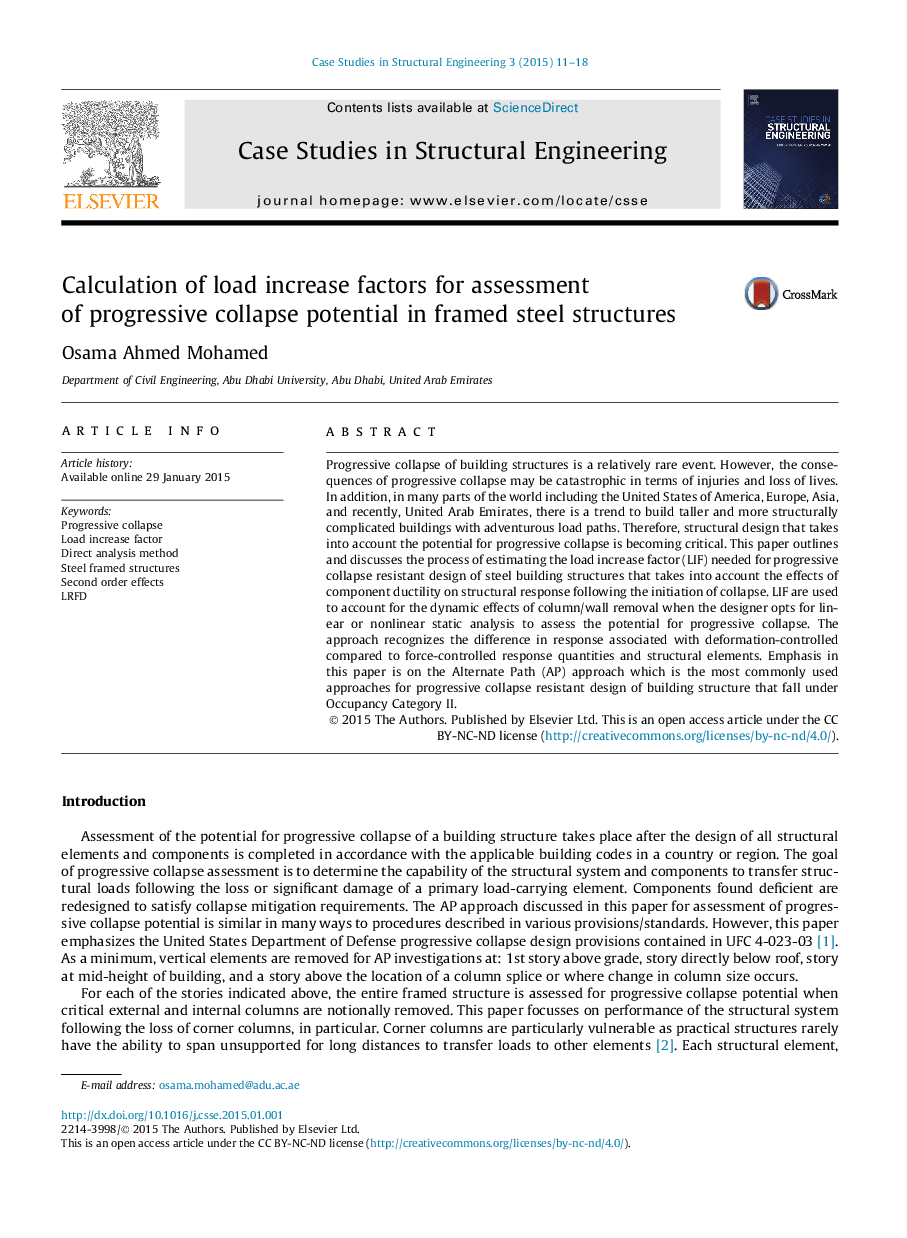| Article ID | Journal | Published Year | Pages | File Type |
|---|---|---|---|---|
| 250616 | Case Studies in Structural Engineering | 2015 | 8 Pages |
•Progressive collapse resistant design must consider component and connection ductility.•Linear static analysis procedure outlined for progressive collapse resistant design.•This paper demonstrated the procedure for calculating the magnified gravity loads.•Large number of analyses required based on DoD procedure for progressive collapse.
Progressive collapse of building structures is a relatively rare event. However, the consequences of progressive collapse may be catastrophic in terms of injuries and loss of lives. In addition, in many parts of the world including the United States of America, Europe, Asia, and recently, United Arab Emirates, there is a trend to build taller and more structurally complicated buildings with adventurous load paths. Therefore, structural design that takes into account the potential for progressive collapse is becoming critical. This paper outlines and discusses the process of estimating the load increase factor (LIF) needed for progressive collapse resistant design of steel building structures that takes into account the effects of component ductility on structural response following the initiation of collapse. LIF are used to account for the dynamic effects of column/wall removal when the designer opts for linear or nonlinear static analysis to assess the potential for progressive collapse. The approach recognizes the difference in response associated with deformation-controlled compared to force-controlled response quantities and structural elements. Emphasis in this paper is on the Alternate Path (AP) approach which is the most commonly used approaches for progressive collapse resistant design of building structure that fall under Occupancy Category II.
